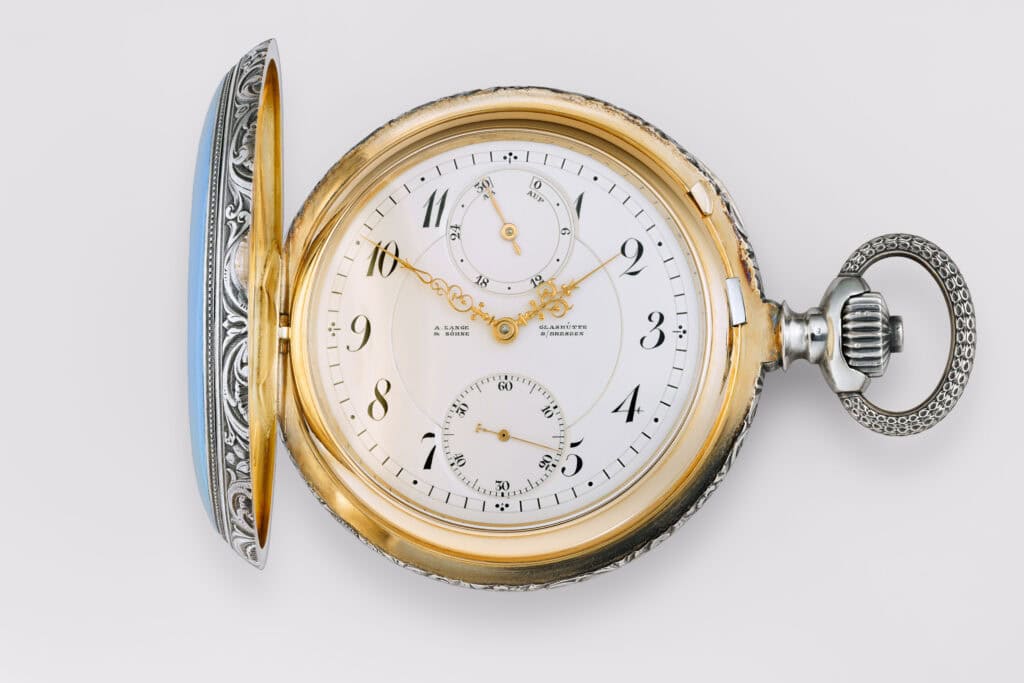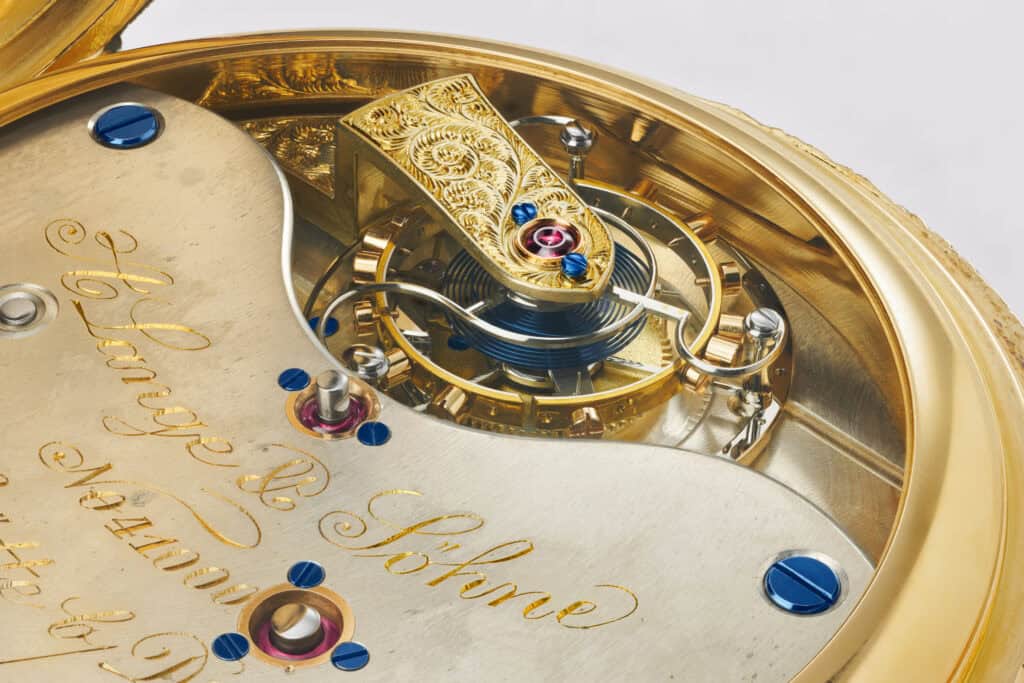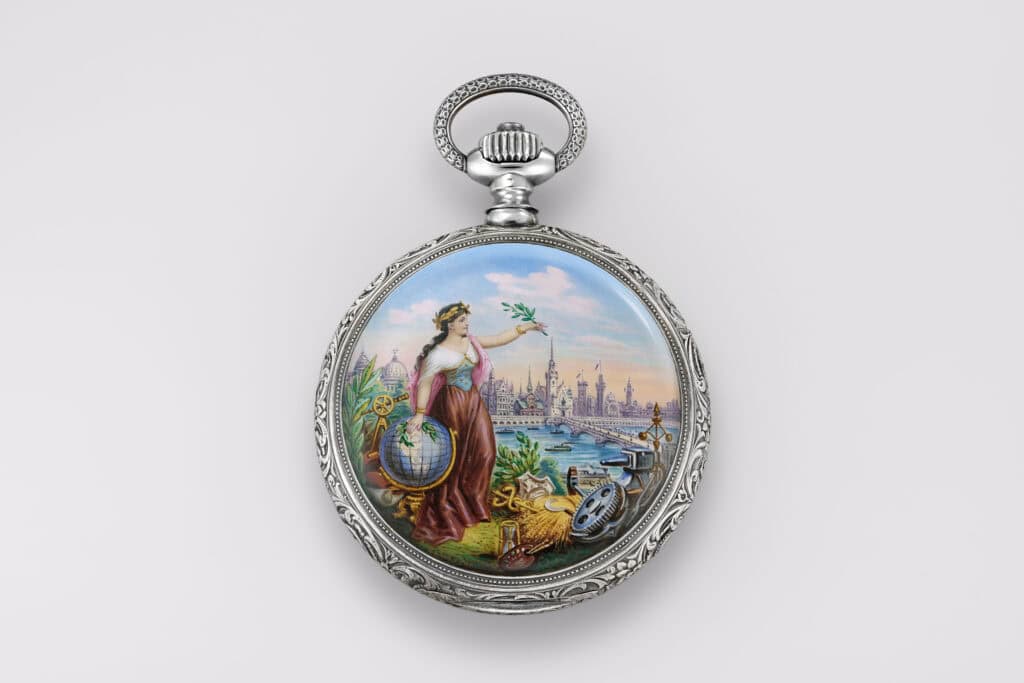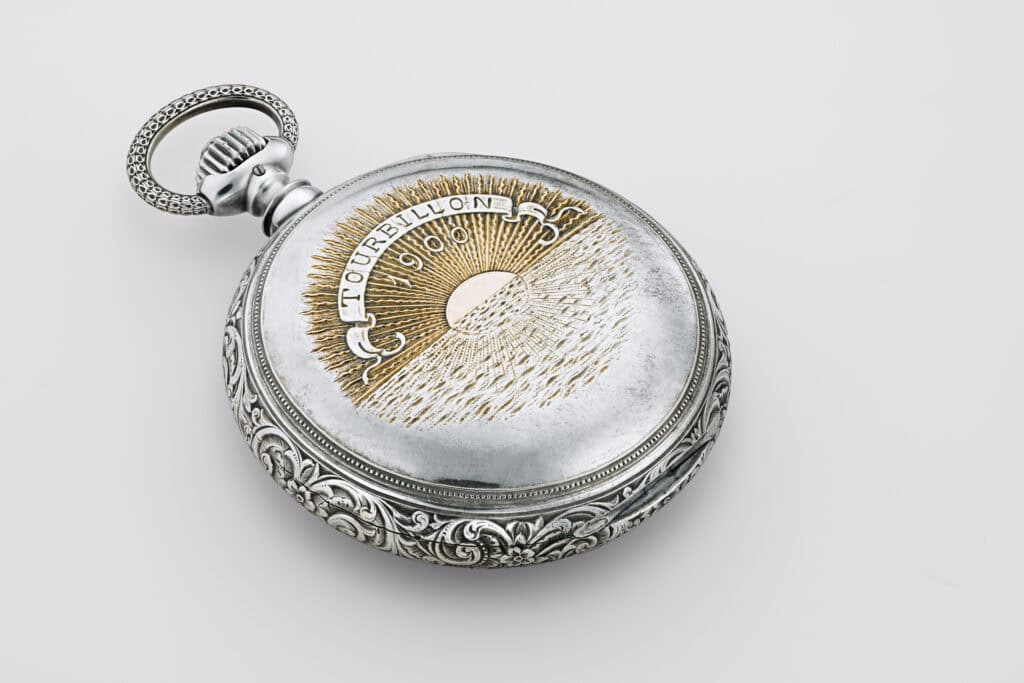To mark the 125th anniversary of the legendary Centennial Tourbillon—one of the undisputed highlights of the 1900 Paris Exhibition—A. Lange & Söhne revisits the deep historical ties between the French capital and the formative years of Glashütte precision watchmaking.

Few pieces in Lange’s storied past shine as brightly as Centennial Tourbillon No. 41000, a landmark creation that continues to captivate collectors. Although the manufacture began producing tourbillons in 1892, they remained exceedingly rare; just nine examples are recorded. Among them, this magnificent timepiece stands apart as a technical triumph and an artistic statement of rare calibre.
Its movement, a masterpiece of late-19th-century ingenuity, unites a one-minute tourbillon with a fusée-and-chain transmission—an exacting combination reserved for only the most elevated horology. True to Lange tradition, it also features the signature UP/DOWN power-reserve indicator.

But for the Exposition Universelle of 1900, Emil Lange—then the second-generation steward of the manufacture—transformed the watch into something even more extraordinary. As a member of the international jury, he could display the piece only hors concours, yet it quickly became a talking point among connoisseurs. In the spirit of the Belle Époque, with its celebratory motto “A century in review”, the watch was lavishly appointed. Its silver-plated pink-gold case was engraved in opulent Neo-Renaissance style, framing a polychrome enamel miniature chosen with deliberate symbolism.

At its centre is Minerva, Roman goddess of wisdom, commerce and the arts, holding an olive branch and laurel wreath—emblems of peace and triumph. Behind her, the national pavilions along the Quai des Nations (today’s Quai d’Orsay) subtly acknowledge the monumental occasion for which this timepiece was conceived. It is a tableau that reflects both technical mastery and a deeply cultured aesthetic sensibility.

Two years after the Exhibition, Emil Lange was appointed Chevalier of the French Legion of Honour—an accolade not only for his contribution as a juror, but also a recognition of the manufacture’s rising stature in the heart of European watchmaking.
Yet the bond between Paris and A. Lange & Söhne reaches further back. Before founding his workshop in Glashütte in 1845, Ferdinand Adolph Lange spent four formative years in the French capital—then one of the world’s centres of precision horology. Under the renowned chronometer maker Joseph Thaddäus Winnerl, Lange refined his craft and developed the ideas that would later define Saxon watchmaking. He also attended lectures by the celebrated physicist and astronomer François Arago at the Sorbonne, absorbing a scientific discipline that would become a hallmark of his work.

The Centennial Tourbillon No. 41000 set a benchmark that shaped both the historical reputation of A. Lange & Söhne and its modern renaissance. Its complex architecture—tourbillon, fusée-and-chain, UP/DOWN—served as the blueprint for the TOURBILLON “Pour le Mérite,” unveiled after the company’s re-establishment in 1990. That modern successor generated a sensation remarkably similar to that of its 1900 forebear.

In both eras, Paris responded with admiration. And for collectors today, the legacy of No. 41000 continues to embody what defines A. Lange & Söhne: technical purity, uncompromising craftsmanship, and an elegance that speaks quietly but with absolute authority.
For more information please visit A. Lange & Söhne


